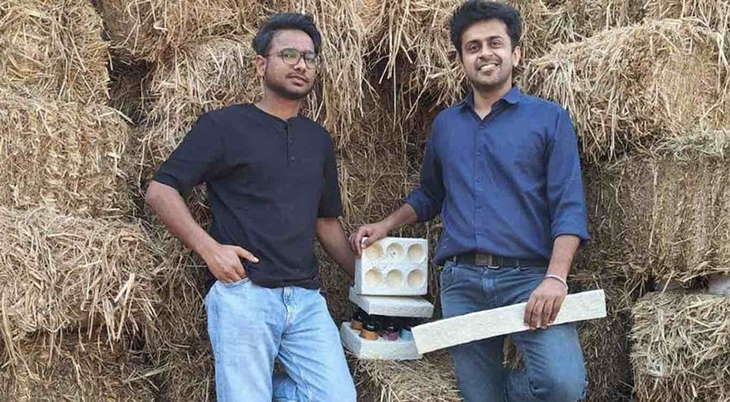
A Delhi-based engineer was able to successfully design a replacement for polystyrene packaging made out of “rice stubble,” which are the dead stalks left after the rice season passes in India. The sad part is that millions of tons of these are left to burn each year because it has been rendered useless.
However, they say that out of need comes creativity. The idea came first to mind Mr. Arpit Dhupar’s young nephew drew a picture of the world covered in grey skies. He was left dumbstruck because he didn’t want the younger generations to have this kind of impression.
In his nephew’s drawing, he saw that everything else was fine. The grass was green, the sun was yellow, and the mountains were white and brown. However, the sky grey. It suddenly dawned on him that his nephew simply drew what he saw each every year when the rice stubble was burned and the sky was covered in smoke.
“We shouldn’t live in a world where we have to explain to kids that the sky should be painted blue. It should be a given,” he said to The Better India.
Lin order to change the situation, he launched a new business venture that he called Dharaksha Ecosystems. The main goal was to address the rice stubble problem. Basically, the farmers need to clear off their land immediately after harvest season, and to do that, burning was required. The stubby was high in moisture content. This meant that it was not good for stove fuel. Rather, they’d burn it in huge pyres to get rid of it.
In the new factory Dhupar built, he managed to convert 250 metric tons of rice stubble harvested from 100 acres of farmland in Punjab and Haryana into what they now use as packaging. This also allowed farmers to make money, as much as $30 per acre, for something they would have otherwise just burned and disposed.

Dhupar wanted to originally use mushrooms over highly biodegrade baled stacks of rice stubble. However, he discovered that the fungus in these mushrooms left behind a metabolite that wasn’t biodegradable. So, instead of solving a waste problem, he just created more waste in the process, and this didn’t sit well with him.
He also eventually realized that the filaments that made up the subterranean structure of the mushrooms, called mycelium, were much like a binding agent that turned the baled stubble into something sturdy.
“This wasn’t a waste material but could be a usable one,” Dhupar said. “Through bio-fabrication, we could use the stubble waste to create a material similar to [polystyrene], but one that was biodegradable.”
For the other parts of the world, people had talked about all sorts of sustainable packaging ideas. Many had been made available by people who don’t have much experience in markets and commerce to boast of. For Dhupar’s stubble packaging, it was a different story altogether.

Dhupar had already successfully prevented over half a million pounds of polystyrene from entering landfills since he launched his product in the market. And the best part about it is that the foam comes with numerous impressive properties that other products don’t have.
What happens is that the mycelium-bound stubble becomes hard and fire-retardant when this is baked in the oven. It also allows the packaging to be engraved in laser. More importantly, what he has right now has the ability to tolerate high moisture content and is also anti-static in nature.
The packaging sells around 20 metric tons each month and they are able to earn around $30.5 thousand dollars on a yearly basis, and that’s because they now mostly sell to glassware companies. Imagine just how much they can succeed if other companies look into this kind of packaging as well.
What are your thoughts? Please comment below and share this news!
True Activist / Report a typo


